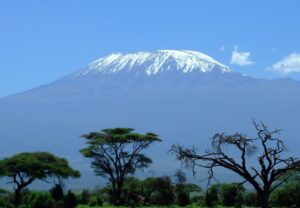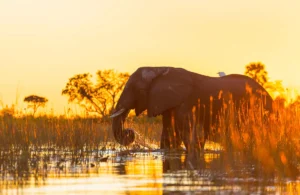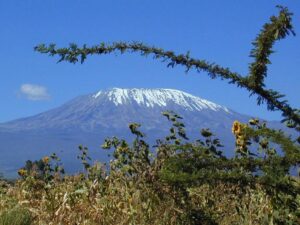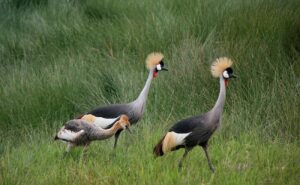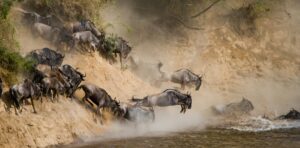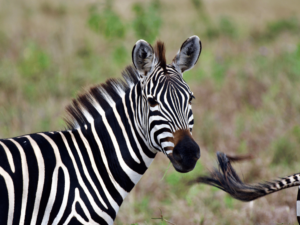Mt Kilimanjaro Tanzania: A Journey to Africa’s Highest Peak
There’s a unique magic that comes with standing at the foot of Mt Kilimanjaro Tanzania, staring up at its snow capped peak piercing the sky. The highest free-standing mountain in the world, Kilimanjaro is not just a climb; it’s a journey of self discovery, resilience, and breathtaking adventure. Every year, thousands of travelers from around the world set their sights on Mt Kilimanjaro Tanzania, eager to experience the thrill of conquering Africa’s highest point and immerse themselves in the awe-inspiring landscapes of the Tanzanian wilderness.
Why Climb Mt Kilimanjaro Tanzania?
Climbing Mt Kilimanjaro Tanzania is more than just ticking a destination off your bucket list. It’s an opportunity to explore multiple ecosystems within a single mountain. From lush rainforests to alpine deserts and icy summits, Mt Kilimanjaro Tanzania offers a journey through some of the most diverse natural landscapes on Earth. Unlike other mountains, Kilimanjaro is accessible without technical climbing skills, making it a dream for adventurous travelers and seasoned trekkers alike.
The mountain’s grandeur is complemented by its cultural richness. Mt Kilimanjaro Tanzania sits in the Kilimanjaro Region, home to the Chagga people, who have lived in the shadow of the mountain for centuries. Their warm hospitality, unique culture, and stories of the mountain’s history enhance the trekking experience, providing a glimpse into life at the base of Africa’s highest peak.
Preparing for Your Climb of Mt Kilimanjaro Tanzania
Successfully reaching the summit of Mt Kilimanjaro Tanzania requires preparation, both physically and mentally. A well structured training plan can make the difference between a triumphant ascent and a challenging struggle. Begin with cardiovascular exercises such as running, cycling, or hiking to increase stamina. Strengthening your legs, core, and back ensures you can handle the mountain’s steep trails.
High-altitude preparation is equally essential. If possible, train at elevated locations to help your body adjust to lower oxygen levels. Acclimatization is critical on Mt Kilimanjaro Tanzania, as altitude sickness can affect even the fittest trekkers. Remember, the mountain is not a race the journey is about steady progress and savoring the experience.
Choosing the Right Route on Mt Kilimanjaro Tanzania
One of the most exciting aspects of climbing Mt Kilimanjaro Tanzania is the variety of trekking routes. Each route offers unique landscapes, varying difficulty levels, and different cultural encounters.
Marangu Route
Known as the “Coca Cola Route,” the Marangu Path is the only route offering hut accommodations, making it a popular choice for those who prefer comfort. It passes through tropical forests and moorlands before reaching the high-altitude zones of Mt Kilimanjaro Tanzania.
Machame Route
Also called the “Whiskey Route,” Machame is more challenging but highly rewarding. Trekkers experience diverse ecosystems and panoramic views, from rainforest to alpine deserts. This route provides excellent acclimatization opportunities, increasing the likelihood of summiting Mt Kilimanjaro Tanzania successfully.
Lemosho Route
Lemosho is renowned for its scenic beauty and lower crowd levels. The route passes through lush forests, expansive plains, and the Shira Plateau, offering unparalleled views of Mt Kilimanjaro Tanzania. Lemosho also provides one of the best acclimatization schedules, making it ideal for a successful summit attempt.
Rongai Route
Approaching Mt Kilimanjaro Tanzania from the northern side, Rongai is drier and less crowded. Trekkers experience unique wildlife sightings and panoramic views of the Kenyan plains as they ascend.
Umbwe Route
Umbwe is for the adventurous at heart. Known as the steepest and most direct path to the summit, it’s physically demanding but immensely rewarding. Climbers who take Umbwe are immersed in the raw beauty of Mt Kilimanjaro Tanzania, with dramatic landscapes around every bend.
What to Pack for Mt Kilimanjaro Tanzania
Packing wisely is crucial for your climb of Mt Kilimanjaro Tanzania. Essentials include moisture wicking layers, thermal jackets, gloves, and sturdy trekking boots. Sunglasses, a wide-brimmed hat, and a good backpack complete the list. Don’t forget a camera you’ll want to capture the awe-inspiring vistas that define Mt Kilimanjaro Tanzania.
For longer treks, a headlamp, trekking poles, and extra batteries are invaluable. Remember, preparation is key the right gear ensures you can fully enjoy the adventure while keeping comfortable and safe on Mt Kilimanjaro Tanzania.
Experiencing the Summit of Mt Kilimanjaro Tanzania
The final ascent to Uhuru Peak, the highest point of Mt Kilimanjaro Tanzania, is a moment few will ever forget. Beginning in the early hours, trekkers navigate steep, icy trails under the starlit sky. Every step is challenging, but the anticipation of reaching the summit fuels determination.
Reaching the peak, you’ll witness the sunrise over Africa from 5,895 meters above sea level. The view is surreal: clouds beneath your feet, vast savannahs stretching to the horizon, and the sense of accomplishment washing over you. Summiting Mt Kilimanjaro Tanzania is a life-changing experience, combining physical endurance, mental resilience, and emotional triumph.
Wildlife and Natural Beauty on Mt Kilimanjaro Tanzania
While the summit is the ultimate goal, the beauty of Mt Kilimanjaro Tanzania lies in its journey. The lower slopes are teeming with wildlife—monkeys, birds, and unique flora thrive in the forests surrounding the mountain. Each section of the climb offers a different ecosystem, from lush rainforests to alpine deserts. This variety makes Mt Kilimanjaro Tanzania one of the most ecologically diverse mountains in the world.
The mountain’s rivers, waterfalls, and crater lakes add to its allure, providing scenic rest stops and incredible photography opportunities. Every corner of Mt Kilimanjaro Tanzania tells a story of natural wonder, cultural heritage, and adventure.
Cultural Encounters on Mt Kilimanjaro Tanzania
Climbing Mt Kilimanjaro Tanzania is not only about physical achievement—it’s also a cultural journey. Interacting with the Chagga people at the base of the mountain offers insight into their traditional farming practices, community life, and the spiritual significance of Kilimanjaro. Visitors often find themselves learning Swahili phrases, sharing meals, and understanding the deep connection between the locals and their mountain.
These cultural exchanges enhance the trekking experience, making Mt Kilimanjaro Tanzania more than a climb it’s a window into life at the foot of Africa’s most iconic peak.
The Best Time to Climb Mt Kilimanjaro Tanzania
Timing your climb is critical for success on Mt Kilimanjaro Tanzania. The dry seasons, from January to mid-March and June to October, are ideal. Trails are less muddy, skies are clearer, and summit attempts are safer.
During these periods, you’re more likely to experience uninterrupted views of Mt Kilimanjaro Tanzania’s dramatic landscapes. However, each season offers unique experiences: the rainy season brings fewer trekkers and lush green scenery, while dry months offer stable weather conditions ideal for photography and summit success.
Sustainability and Conservation on Mt Kilimanjaro Tanzania
Preserving Mt Kilimanjaro Tanzania is vital for future generations. Trekkers are encouraged to follow eco-friendly practices: minimize waste, respect wildlife, and stick to designated paths. Conservation initiatives in the region ensure the mountain’s ecosystems remain intact, protecting rare species and maintaining the natural beauty of Mt Kilimanjaro Tanzania.
Choosing responsible tour operators not only enhances your experience but also contributes to the ongoing efforts to safeguard the mountain. Every visitor to Mt Kilimanjaro Tanzania has a role in preserving this natural wonder.
Stories from the Trail of Mt Kilimanjaro Tanzania
Every climber who attempts Mt Kilimanjaro Tanzania has a unique story. Some arrive with years of trekking experience; others are taking on their first mountain. The challenges faced—altitude, weather, fatigue—are shared by all, creating a sense of camaraderie among climbers. Stories of perseverance, laughter, and triumph define the journey, making Mt Kilimanjaro Tanzania more than a destination—it’s a shared adventure and a testament to human resilience.
Photographers, nature enthusiasts, and adventure seekers all find something unforgettable on Mt Kilimanjaro Tanzania. Each step brings new vistas, wildlife encounters, and a deeper appreciation of Africa’s natural splendor.
Planning Your Mt Kilimanjaro Tanzania Adventure
To maximize your experience on Mt Kilimanjaro Tanzania, careful planning is essential. Choose the right route based on fitness and experience, pack appropriately, and select reputable guides. Consider altitude, weather, and personal stamina when designing your trek.
Accommodation ranges from basic mountain huts to luxurious camps with full meals and hot showers, allowing climbers to enjoy comfort even on remote sections of Mt Kilimanjaro Tanzania. Tour operators provide logistical support, safety, and expertise, ensuring your journey is as smooth as it is exhilarating.
Conclusion: Why Mt Kilimanjaro Tanzania Is a Must-Visit
Climbing Mt Kilimanjaro Tanzania is a transformative experience. Beyond the physical challenge, it offers spiritual growth, cultural insight, and the chance to witness Africa from its highest vantage point. From the lush forests to the icy summit, from cultural encounters with the Chagga to breathtaking wildlife sightings, Mt Kilimanjaro Tanzania delivers an adventure like no other.
Every climber leaves with more than memories they carry stories of triumph, resilience, and awe. Mt Kilimanjaro Tanzania is not just a mountain; it’s a journey into the heart of Africa, a test of human endurance, and a celebration of the planet’s extraordinary natural beauty. For those ready to embrace adventure, discover culture, and challenge themselves, Mt Kilimanjaro Tanzania awaits.

